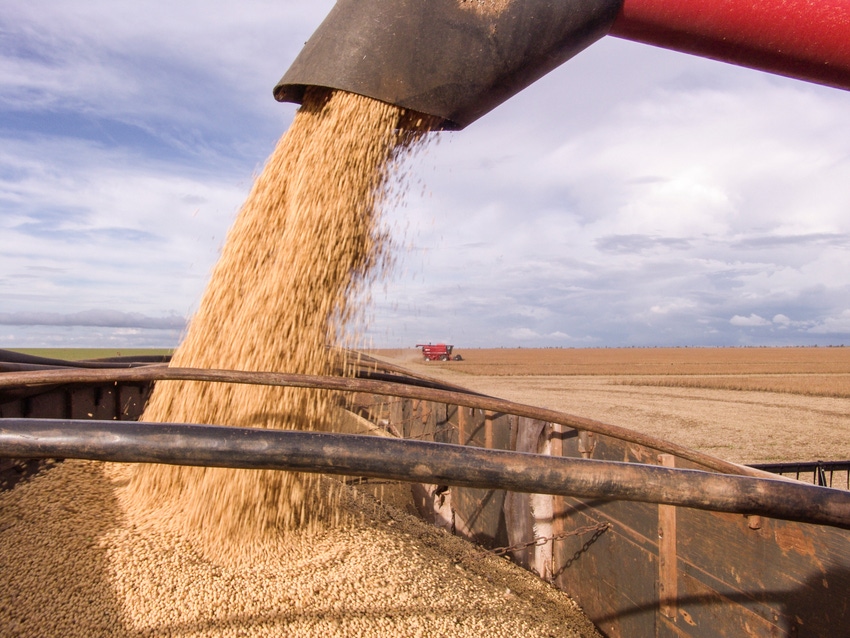Sharply higher basis on corn, soybeans and wheat will likely slice into profit potential.

Grain elevators face significant challenges in the year ahead as they buy basis on corn, soybeans and wheat at the highest levels seen in years. Basis for all three of the major grains is significantly tighter across the country from strong end-user bids, limited pipeline supplies and lack of farmer selling amid an uncertain fall harvest, according to a new report from CoBank’s Knowledge Exchange division.
“In addition to having to buy more expensive basis, grain elevators are being compelled to offer farmers a range of incentives to sell bushels,” said Tanner Ehmke, manager of CoBank’s Knowledge Exchange division. “Lower rates on storage, free delayed pricing and free grain drying are among those incentives, which are eating into the elevators’ revenues.”
Grain quality issues resulting from high moisture levels at harvest and frost damage on immature crops will also raise management costs for elevators, potentially resulting in greater losses due to shrinkage and spoilage, the report noted. Additionally, propane supply shortages in some regions is also driving up the cost of drying grain for many grain elevators.
Meanwhile, carry in the futures market for corn, soybeans and wheat is trending smaller as basis strengthens.
“Futures carry on the Minneapolis [Minn.] soft red winter wheat contract has fallen nearly to zero amid a shortfall in supplies, while the Kansas City [Mo.] hard red winter wheat contract, which, in recent years, offered reliable profits for grain elevators, has also fallen sharply amid tight basis, the expectation for falling acreage and a new variable storage rate,” CoBank noted.
Weather also continues to be the major challenge for both farmers and grain handlers. In fact, the report said the corn and soybean harvest in some regions of the Corn Belt will likely last into the winter, with total new-crop bushel inventories likely to remain unknown through winter.
Further, the report said while most regions of the Corn Belt are expected to see significant losses in corn yield, states such as Kansas, Kentucky, Missouri, Tennessee and Texas are expected to have record yields. CoBank said no Corn Belt crop year has uniformity in production, which leads to more dynamic variability in local markets and a highly volatile basis.
CoBank further noted that the uncertainty over how many bushels would be in the bin this fall has caused farmers to refrain from pricing new-crop grain or to hold onto old-crop inventories they might need to fulfill contracts.
According to CoBank, in addition to a challenging growing year, soybeans continue to be affected by the ongoing negotiations between China and the U.S.
“Even before the fall harvest delays, surplus inventories from the trade war with China pulled soybean basis down to multiyear lows,” the report noted. “Soybeans’ lackluster export program since mid-2018 and the record-large inventories that resulted are keeping soybean basis from strengthening to the levels seen with corn.”
Still, grain elevators have an opportunity to improve margins in an otherwise stressful year, CoBank said. Basis will likely soften as more bushels come to market as harvest operations conclude, giving grain handlers an opportunity to potentially buy cheaper basis. In regions where farmers harvested record yields, elevators can use the volume to make up the loss in margin.
“While grain elevator margins generally are expected to be down in the year ahead, grain handlers can profit from blending new-crop supplies with existing old-crop inventories, and those with reliable access to propane can profit from drying grain,” Ehmke said.
About the Author(s)
You May Also Like




.png?width=300&auto=webp&quality=80&disable=upscale)
